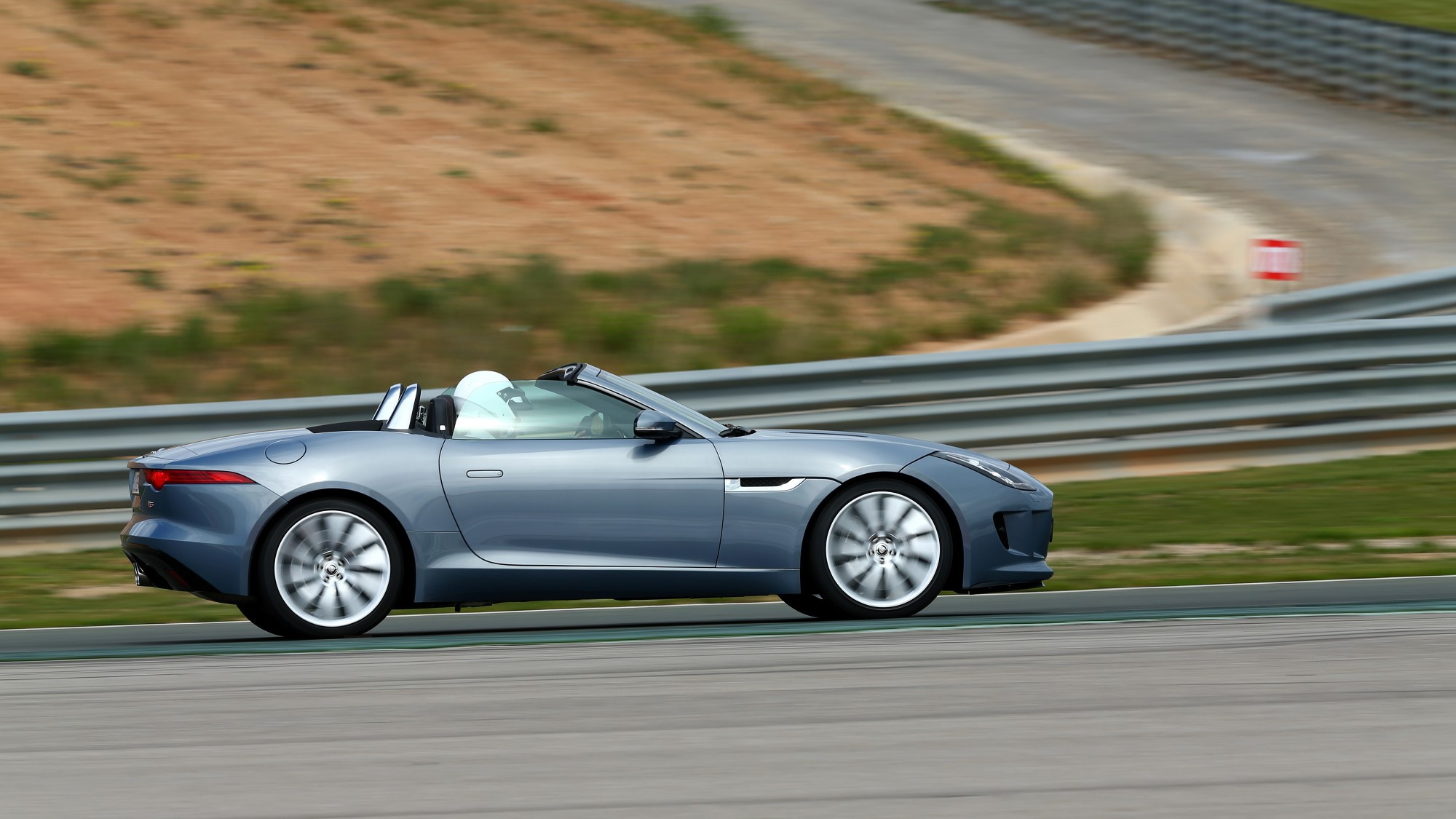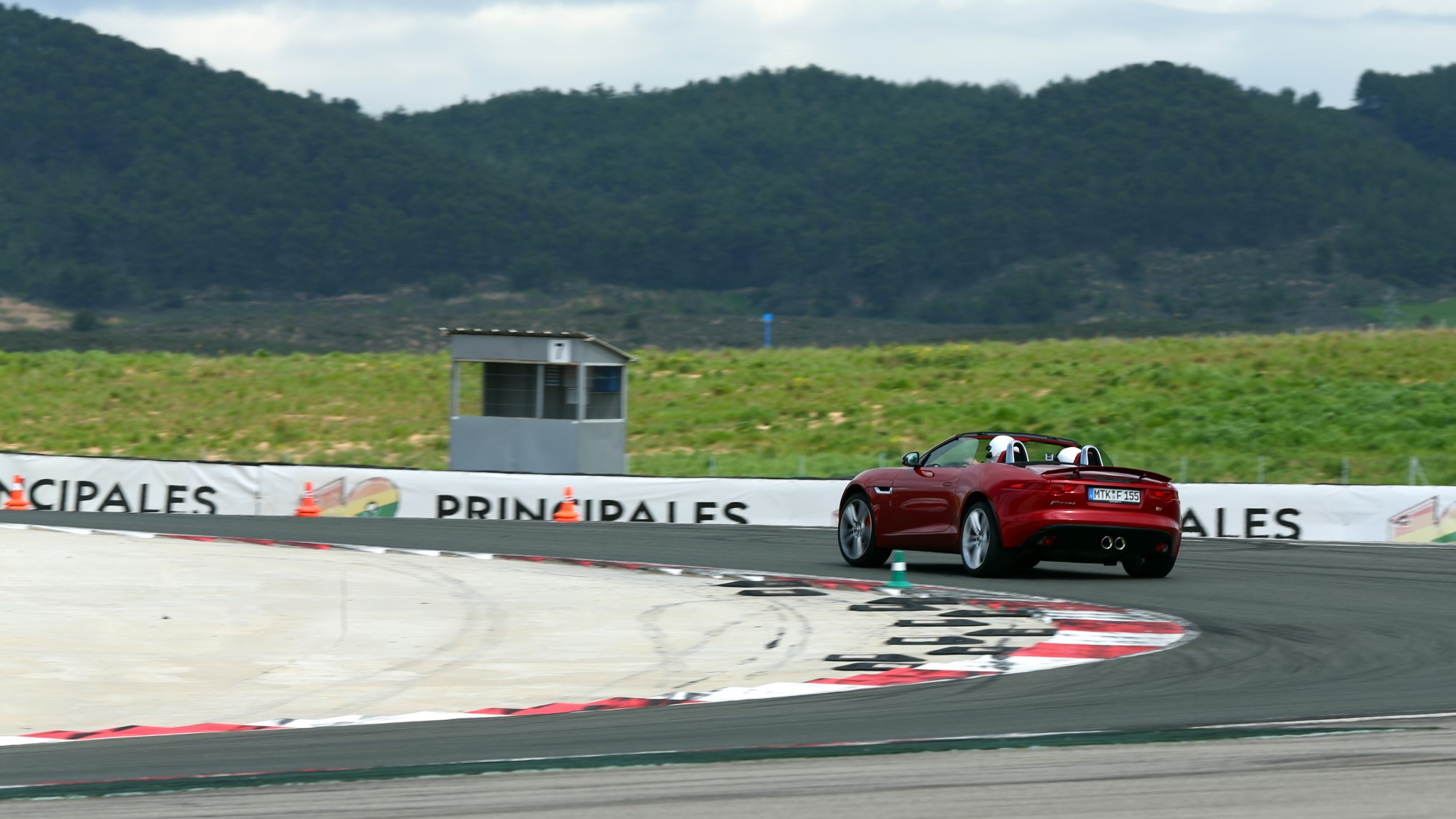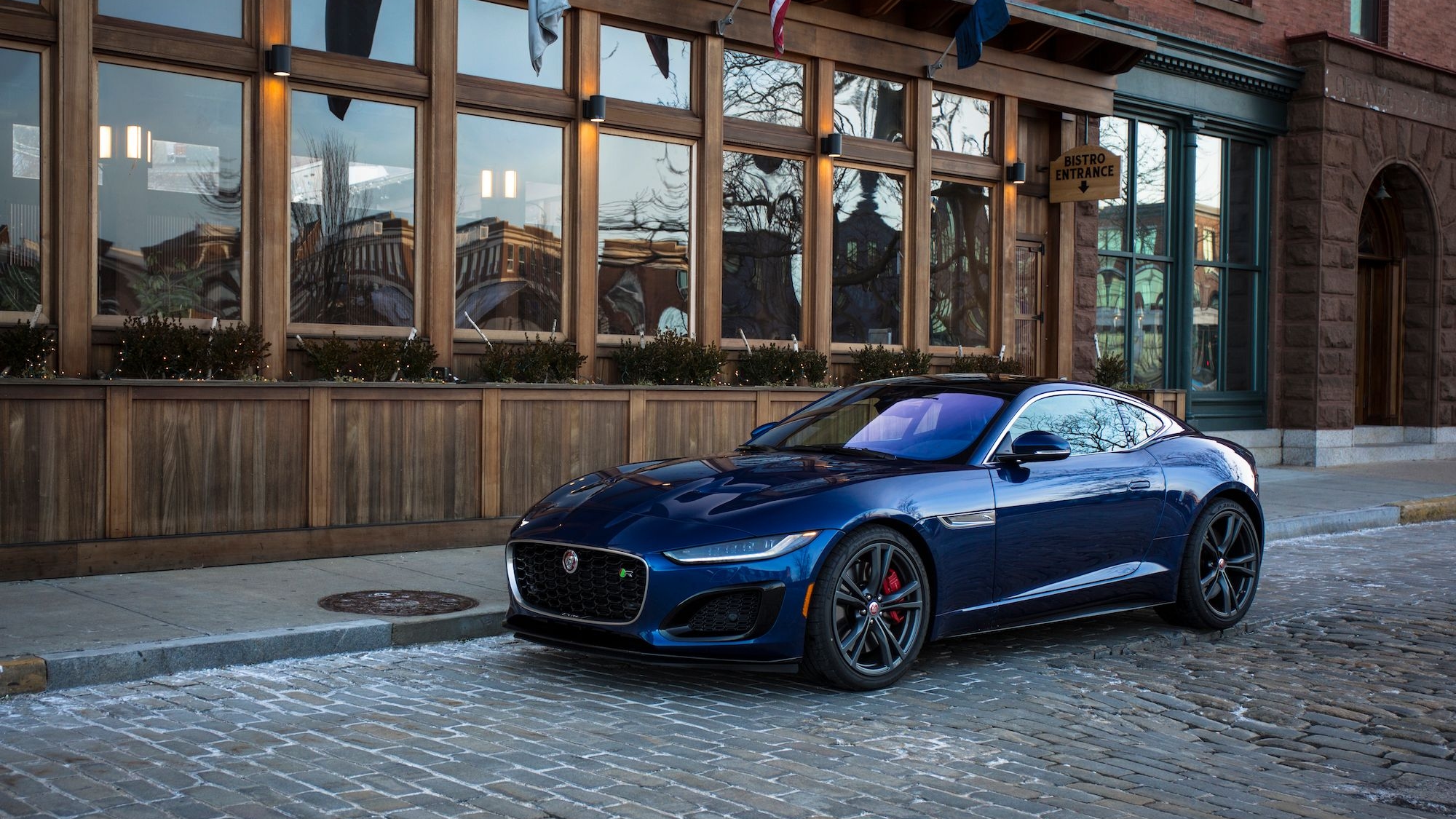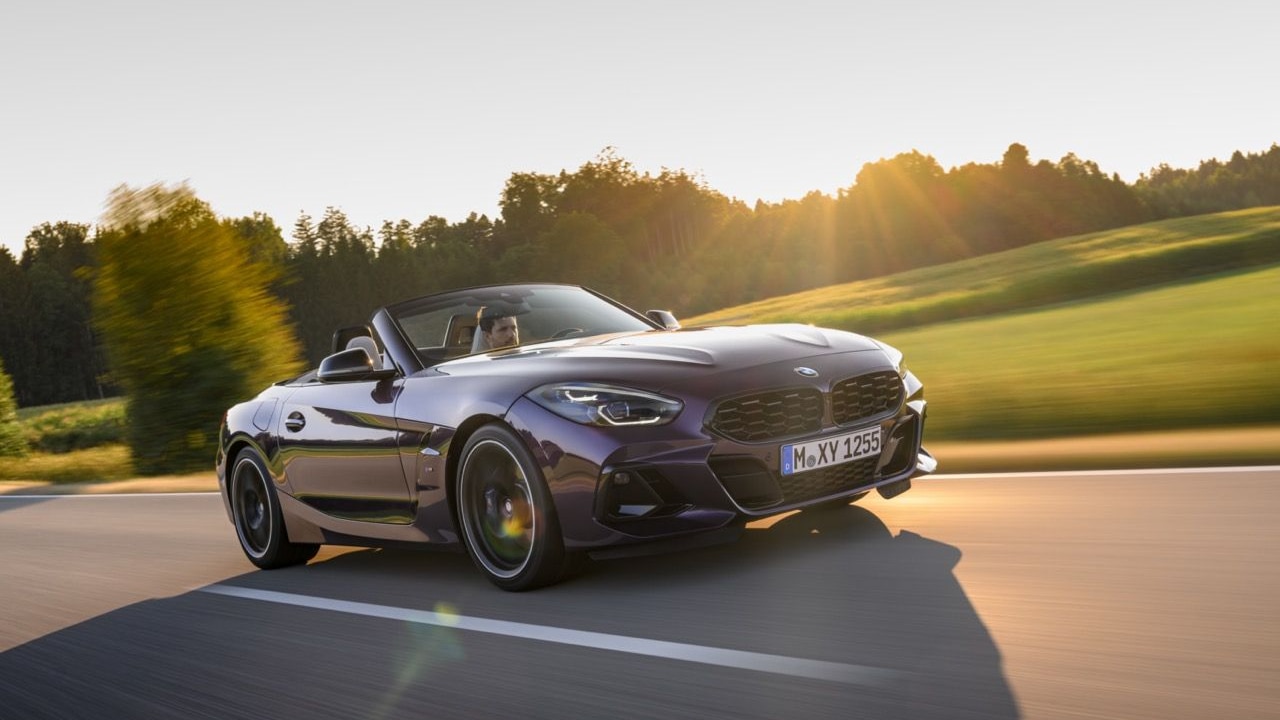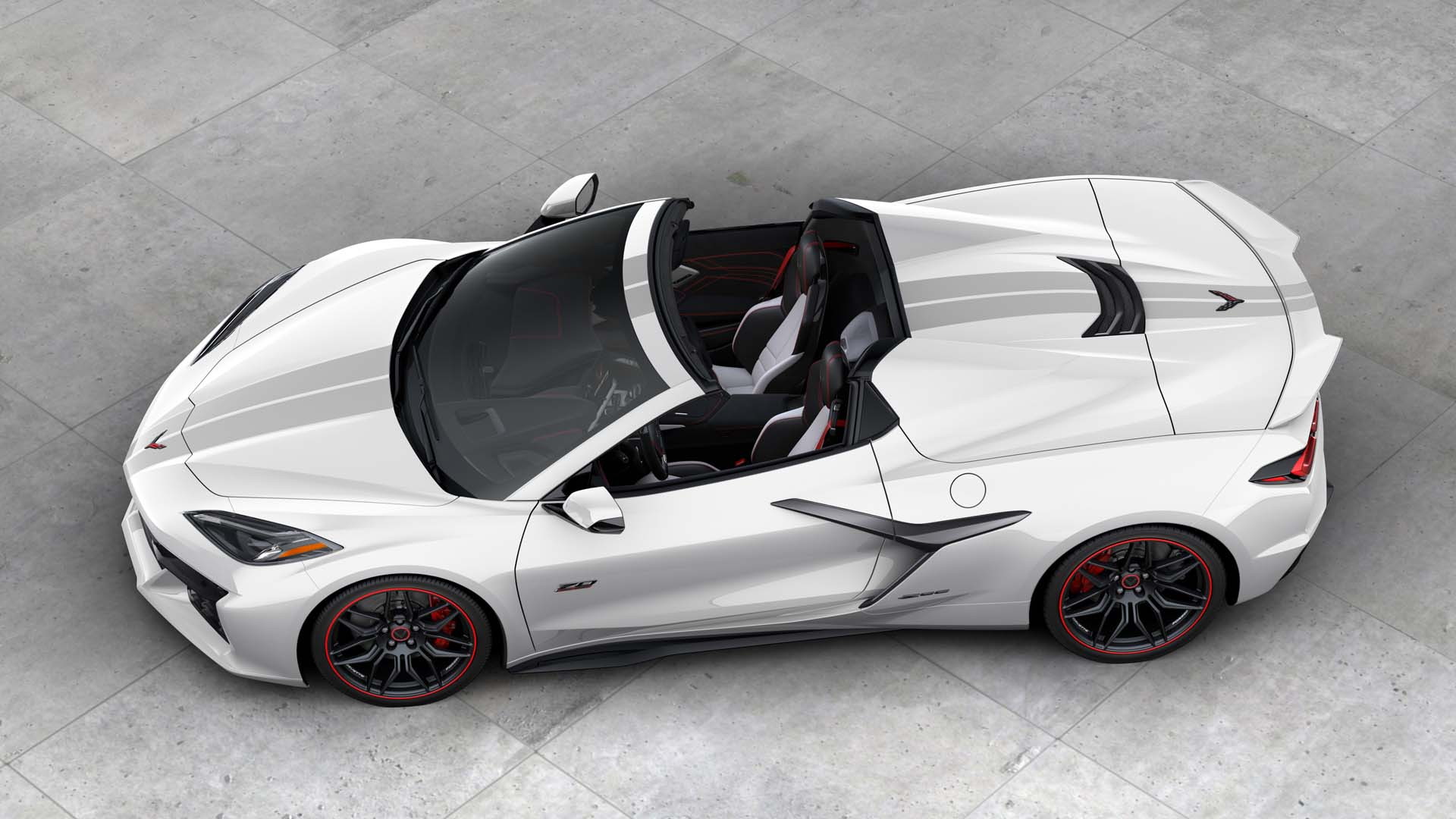What defines a sports car? Is it an arbitrary set of numbers--weight limits, 0-60 mph times, lateral g forces? Or is it something more emotional, something that can't easily be quantified?
I tend to think it's the latter, and the 2014 Jaguar F-Type presents a convincing case in support of that tendency.
Running strictly by the numbers, the F-Type falls a lot closer to the Grand Tourer class than it does to any classical (or even fairly modern) definition of a "sports car." But behind the wheel, the F-Type's spirit, the feeling it evokes in the driver, rails against classification with two-ton tourers.
Weighing in at 3,521 to 3,671 pounds, with a footprint that's 6 percent larger than the 2013 Porsche 911's, the F-Type is no minimalist enthusiast's machine. With up to 495 horsepower on tap--and 340 horsepower in its least-powerful form--it's also not a lesson in momentum maintenance and apex speeds.
But between the balanced street-tuned suspension, throaty exhaust notes, abundant torque, balanced chassis, and massive grip, the F-Type ultimately validates Jaguar's claims of a return to the sports car game--whatever the numbers say, whatever the time lapse since the last one.
The Entry Point To F-Type
There are three main flavors to the 2014 F-Type: the base model, named simply "F-Type," the F-Type S, and the F-Type V8 S. Between the three, the primary differences are engine output or type; optional equipment availability; and suspension configuration.
The base F-Type, starting at $69,000 (though it can quickly rise from there) sports a supercharged 3.0-liter V-6 engine rated at 340 horsepower. Good for 5.1-second 0-60 mph runs and a top speed of 161 mph, the base F-Type comes standard with 18-inch wheels and cloth seats. It's the lightest of the group, weighing 3,521 pounds, but it misses out on the Adaptive Dynamic Suspension system, which improves not only ride quality, but handling, in the V6 S and V8 S, where it's standard.
The base F-Type also misses out on Jaguar's very well-tuned performance electronics system, available only on the S and V8 S. With a Configurable Dynamics option offering control over throttle and transmission response, steering weight, and suspension settings (for Adaptive Dynamics-equipped cars), the F-Type lets you tailor the car's driving feel to fit your uses.

Jaguar F-Type with heritage cars
But what's it like behind the wheel? In base form, the F-Type is quick, but not particularly inspiring. The low-end torque is good, but, given the car's weight, not great. Once you muscle past the 3,500-rpm mark, however, things liven up greatly.
If you've opted for the two-mode exhaust system (our test car was fitted with it) the sound wakes up even more, right around the same transition point. Going from quiet and understated (if a bit pedestrian) the sound comes alive, giving even the base F-Type a pleasant bark, particularly on upshifts and downshifts.
When it's time to wipe away the perma-grin installed by straight-line pedal mashing and start turning corners, the F-Type is equally happy to oblige.
Well, mostly, anyway.
In base form the F-Type gets Continental ContiSportContact2 "max performance" summer tires. Those tires are good, but, ultimately, not great. Grip is fine, and the tires are communicative in the auditory sense, but there's little feedback returned through the wheel.
Part of the blame there lies with the Jaguar's steering, however. As a non-electric power steering setup, you might think there are no good excuses for less-than-awesome feel. You'd be right, but that doesn't mean that's what you get with the F-Type.
In fact, you get decidedly non-awesome, rather numb steering feel with the F-Type, particularly in base form. Part of the blame for this shortfall also undoubtedly lies in the F-Type's not-so-trim weight. Even approaching 50/50 weight distribution--with passengers, again--that means there's the better part of a ton over the front contact patches. Mid-engine and rear-engine cars (and light front engine cars) are often lauded for their steering feel--feel that is, in part, due to the relatively lightly loaded front axles, and, consequently, tires.

2014 Jaguar F-Type first drive
It's not all bad news when it comes to steering, however; steering weight is good, and the variable ratio is quick and intuitive--the cars reactions are nearly as quick as the driver's. The inherent balance of the F-Type, from its spring and damper rates to its near 50/50 weight balance (again, with passengers), the F-Type is well-poised. It's just a bit less communicative about what's going on with the front end than we'd like to see in a sports car.
The Mid-Point Of F-Type
Stepping up to the middle of the F-Type range, you have the $81,000 F-Type S. Not to be confused with the F-Type V8 S, the F-Type S is powered by essentially the same 3.0-liter supercharged V-6 engine, just in a higher state of tune, the (V-6) S is good for 380 horsepower and 4.8-second 0-60 mph runs.
Best of all, the extra power and torque in V6 S trim relieves the car of its sub-3,500-rpm dead spot and gives it a lively, quick feeling in all conditions. The bark, too, is sharper.
Uncork the F-Type V6 S in Dynamic Mode with the "googly eyes" dual-mode exhaust button switched on, and I challenge you not to smile. Most will break out in giggles.
In F-Type V6 S form, Pirelli PZero tires on larger 19-inch wheels take over grip duty--and the improvement is immediately noticeable. Steering communication is more abundant thanks to less sidewall flex, though, overall, feedback remains muted.
But the chassis itself appreciates the extra grip and readily puts it to use. The communication lacking through the steering wheel is made up for by the input coming back through the seat and pedals; in cornering, the balance of the car is easily discernible. Power out of a corner and you'll sense the impending tail-out attitude just before it happens; hammer the brakes and the car dives just enough, maintaining stability while slowing with force.
The Adaptive Dynamics suspension system takes much of the credit here, too, offering up to 500 adjustments per second to adapt to the driver's inputs and the road itself. Modern adaptive damper systems have come a long, long way from their rather recent origins, and the F-Type's system is among the most seamless.
That chassis is 30 percent stiffer in key lateral sections than any other Jaguar, ever. It's also almost entirely aluminum. And it's clear that Jaguar's engineers have spent a lot of time tuning and refining both ride and handling.
The only question we have is why it's so heavy--especially given the abundant use of aluminum. Unfortunately, under direct questioning, Jaguar's engineers weren't able to give a good reason.
But the F-Type is, by sports car standards, heavy. In V6 S form, it weighs 3,558 pounds. That's more than 300 pounds heavier than the 2013 Porsche 911 Carrera S Cabriolet. And the 911 has 20 more horsepower. And a back seat.
The Pinnacle Of F-Type
There's more to the F-Type yet, however: the $92,000 V8 S. Powered by the familiar 5.0-liter supercharged V-8 found (in similar form) in other Jaguar products, the F-Type V8 S generates a stout 495 horsepower.
Tipping the scales at 3,671 pounds, it's also the heaviest F-Type, but 150 pounds heavier than the base model is a relatively small penalty to pay for all of those ponies.
Surprisingly, at least to me, the V8 S doesn't feel any less nimble or ready to run than the V6 S. The extra weight--83 pounds in this case--is simply too little to notice; there's no additional penalty in feel.
That leaves the throaty V-8 engine to add a definite element of awesome, roared by its quad-tipped exhaust and then immediately seen on the rapidly rotating speedo needle. Jaguar quotes the 50-75 mph acceleration time of the F-Type V8 S at just 2.5 seconds--a full second quicker than the base F-Type. I believe it.
I also believe the V8 S's 186 mph top speed--very quick indeed for a sub-$100,000 convertible. It's surprisingly easy to get a significant fraction of the way there without realizing it, too.
With its abundant power and speed, the F-Type V8 S can almost feel more like a compact grand tourer than a sports car, particularly once the road opens up and straightens out. In this scenario, it has the composure and pace of a dedicated continent-crosser. But as soon as the curves return and the sight lines shorten, it perks its ears, eager for the challenge.

2014 Jaguar F-Type first drive
Because of these V-8 factors, we also believe Jaguar's estimate of about half of U.S. buyers opting for the top-of-the-line F-Type V8 S, the rest split fairly evenly between the base and V6 S models.
Enough Brains--What About Beauty?
The F-Type has been almost universally acclaimed as a beautiful car. Why? It has headlights, a grille, fenders and flares, just like every other car.
Because of the proportion and shape of those elements; because of the organic curves and ratios; because of the attention to detail. But also because of something less easily quantified, some essence, that is uniquely Jaguar.
Jaguar Director of Design, Ian Callum, admits there are few direct cues to Jaguar's illustrious sports car past--in fact, the idea was to design in an entirely new direction, but with the ethos that inspired those past designs.
That ethos was put in place by Jaguar founder William Lyons; its core tenet: to do something new, original. In that, the F-Type succeeds, even while it relates to Jaguar's other new cars, particularly the XK.
Inside, the idea was the capture the spirit, if not the detail, of the earlier cars as well. While the cockpit is entirely modern in look and feel, the choice of a shift lever (or joystick) instead of the round dial selector found in other Jags, as well as the shape and location of the knobs and toggles along the center stack, were all chosen to give an impression of mechanical simplicity--despite the advanced electronics they control. The interior, like the rest of the car, is also extensively customizable.
Fantasy Meets Reality
While the design is exquisite, somehow quintessentially Jaguar yet also new and modern, how does the package that design's wrapped around stack up?
The answer: Fairly well--though there are a few issues.
Trunk space, for one, is minimal. Even apart from the space stolen by design to stow the Z-fold soft top, the floor of the trunk is quite high, and the suspension towers intrude at the sides. The result is a space that's barely suitable even for smaller bags, and not deep enough to contain much in the way of a real suitcase--a potential issue for those wanting a weekend getaway car.
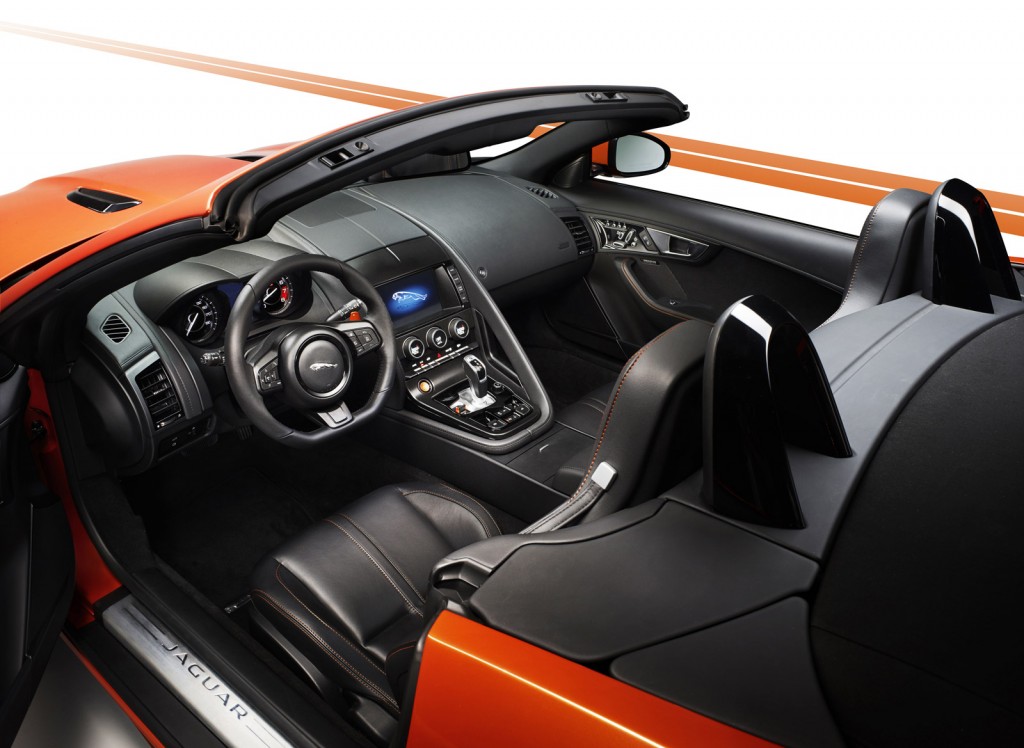
2014 Jaguar F-Type with Firesand paint and Design and Black exterior and interior upgrades
The cockpit, too, is a bit short on space. In a car with a footprint 6 percent larger than the 911--which offers a backseat and a reasonable front trunk--you'd expect ample leg room. Not so. In fact, the shortage of leg room requires a more vertical seating position (at least for taller drivers) than is truly comfortable, as the seatback runs into the rear bulkhead. For passengers, it's worse, as the floorboard doesn't extend as far forward as it does for the driver's pedals.
Knee room is tight, as well, making for a bit of discomfort for long-legged drivers (like myself) on longer drives. The rest of the cockpit, however, is as spacious as it should be--shoulder, hip, and headroom are good. The seats, in particular the upgraded leather-wrapped sport seats, are fantastic. Adjustable side bolsters and lumbar support make for a highly tunable seating position, from relaxed and cruising to snug and sporty.
But the biggest issue with the F-Type, for some, will be the lack of a manual transmission.
The eight-speed Quickshift transmission in the F-Type is a rather athletic take on the slushbox concept, with quickened shifts and a 100-percent lockup that skips the torque converter once out of first gear. But it's clearly not a manual--and not a dual-clutch either.
The Quickshift's actual gear changes are quick, indeed--on the order of dual-clutch quick--but there's a lag between driver request (via paddle or center console joystick) and transmission action. It's a noticeable lag, even in Dynamic Mode. In some cases, the transmission simply doesn't respond, perhaps thinking better of your ill-informed manual shift point. Whatever it is, it's a touch balky and difficult to use in manual mode.
Fortunately, it's quite good in fully automatic mode. So good, in fact, in Dynamic Mode, that you're unlikely to wring any thing more from the car shifting on your own except frustration. When left to its own devices, the Quickshift in the F-Type downshifts intelligently, upshifts quickly, and avoids interfering in corners thanks to its Corner Recognition software.
The F-Type: Sports Car Or Something Else?
The question I started out with--the question that remained with me through much of the day and a half driving the 2014 F-Type--is whether the car can truly be called a sports car.
The answer, raw and subjective as it is: it can. It's not a minimalist, pure execution of the theme, but it's a sports car. A luxurious, (mostly) comfortable, beautiful, powerful sports car.
And that sound. Oh, the sound.
_______________________________________
